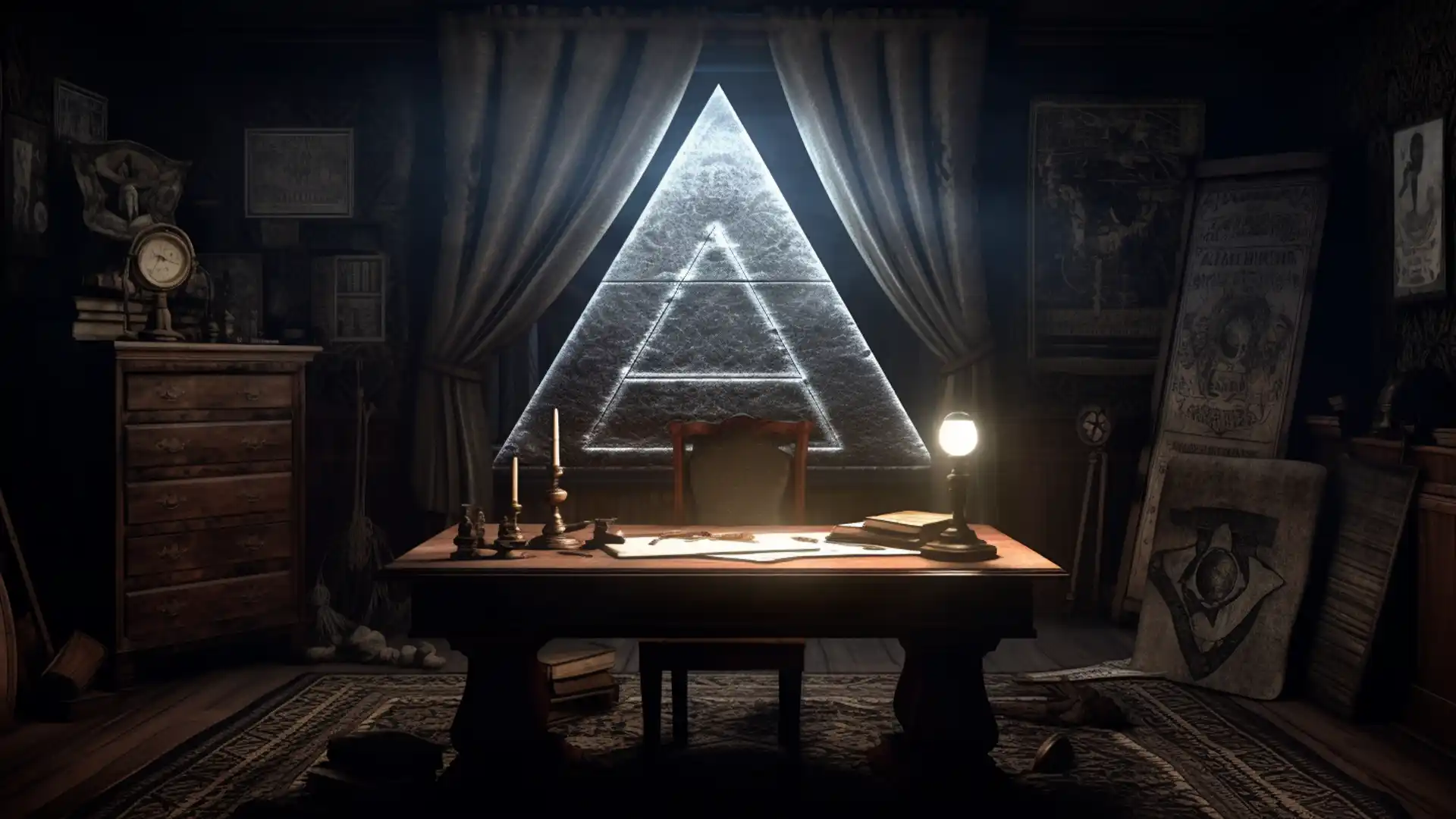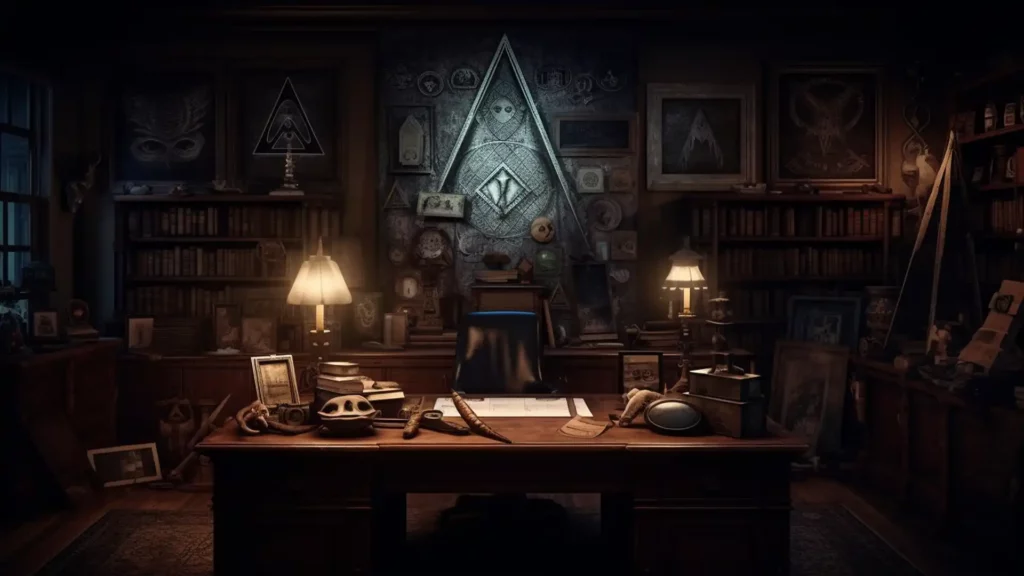Conspiracy Chronicles
Is The Illuminati Real or a Myth?

Have you ever heard of the Illuminati? The mere mention of their name often triggers a whirlwind of curiosity, intrigue, and speculation. Is the Illuminati real or just a product of our imagination? Well, get ready to embark on a fascinating journey as we delve into this age-old question and separate fact from fiction. In this article, we're going to explore the captivating world of the Illuminati from a human perspective, using a conversational tone that makes it easy to understand in any language. So, grab a cup of coffee, get comfy, and join me as we navigate the twists and turns of the Illuminati myth. Let's dive in and uncover the truth together, shall we?
The question of whether the Illuminati is real or a myth is a topic that has fueled countless debates and speculation. The truth is that the historical Illuminati of Bavaria did exist, founded by Adam Weishaupt in 1776. However, their influence and impact were limited, and they eventually disbanded. The modern perception of the Illuminati as an all-powerful secret society controlling world events is largely a myth and a product of conspiracy theories. The sensationalized claims of the Illuminati manipulating governments and orchestrating a new world order lack substantial evidence. It's important to approach the topic with a critical mindset and evaluate claims based on reliable sources and evidence. While the historical Illuminati had their goals and ideals, they are more of a historical phenomenon than a current influential force.
I. The Origins of the Illuminati

Let's dive into the historical origins of the Illuminati, with a particular focus on the Bavarian Illuminati. It all began in the late 18th century when Adam Weishaupt, a German legal scholar, founded the Illuminati in 1776.
The Bavarian Illuminati emerged during a time of great intellectual and societal change. Europe was witnessing the Enlightenment, a period characterized by a pursuit of knowledge, reason, and progressive ideas. Weishaupt, influenced by these intellectual currents, sought to establish an organization that would promote Enlightenment ideals and challenge the existing power structures.
The goals and ideals of the Bavarian Illuminati were centered around promoting rationality, freedom of thought, and social reform. Weishaupt envisioned a society where individuals could pursue knowledge and personal growth free from the constraints imposed by religious and political institutions. He aimed to cultivate a community of enlightened individuals who would work together to bring about positive change in society.
The Bavarian Illuminati operated as a secret society, with hierarchical structures and initiation rituals. Members took on pseudonyms and adhered to a code of secrecy. The organization aimed to attract individuals from various backgrounds, including intellectuals, professionals, and influential figures, to further its mission of enlightenment and societal transformation.
While the Bavarian Illuminati had noble aspirations for social progress, its influence and reach were relatively limited. It gained some traction and membership, particularly among university students, but it never achieved the level of power and control often associated with it in popular imagination.
Understanding the historical context and the goals of the Bavarian Illuminati helps us see that it was more of an intellectual and philosophical movement than a clandestine organization aiming to dominate the world. By exploring these origins, we can begin to separate the reality from the myth surrounding the Illuminati.
II. Separating Fact from Fiction

Now, let's dive deeper into the topic and address some of the common misconceptions and sensationalism that surround the Illuminati. One of the most prevalent misconceptions is the idea that the Illuminati is a powerful secret society with the ability to control world events and manipulate governments. However, it's important to separate fact from fiction.
The notion of the Illuminati controlling the world and orchestrating a global agenda is an exaggerated claim. While the Bavarian Illuminati did have goals of societal transformation, their influence and impact were limited. They were a relatively small organization with a membership consisting mainly of intellectuals and university students. The idea of them wielding immense power and controlling world affairs is largely a product of imaginative conspiracy theories.
Historically, the Bavarian Illuminati faced opposition and eventually disbanded due to government crackdowns and internal conflicts. Their existence was relatively short-lived, and their impact on the course of history was not significant. It's crucial to recognize that they were just one of many intellectual and philosophical movements of their time, aiming to contribute to societal discourse and promote progressive ideas.
By acknowledging the limited historical impact and influence of the Illuminati, we can gain a more grounded perspective on their role in history. It is essential to approach the subject with critical thinking and skepticism, separating the genuine historical facts from the sensationalized claims that have fueled conspiracy theories.
In the next sections, we will delve into the symbolism associated with the Illuminati and explore some of the conspiracy theories that have captured the public's imagination. By examining these aspects, we can further understand the fascination surrounding the Illuminati and analyze their significance in popular culture.
III. The Illuminati Symbols and Signs

Now, let's delve into the intriguing world of Illuminati symbols and signs. Two of the most widely recognized symbols associated with the Illuminati are the pyramid and the all-seeing eye.
The pyramid, often depicted with a radiant eye at its apex, represents a symbol of power and hierarchy. Its origins can be traced back to ancient civilizations, such as the Egyptians, who used pyramids as monumental structures. In the context of the Illuminati, the pyramid is often interpreted as a representation of the organization's alleged desire for control and dominance.
Accompanying the pyramid is the all-seeing eye, also known as the “eye of Providence.” This symbol has a rich history and has been associated with different cultures and belief systems throughout time. In the context of the Illuminati, the all-seeing eye is often connected to notions of surveillance and the concept of a hidden authority overseeing the world.
It's important to clarify that the use of these symbols by the Illuminati is subject to interpretation and speculation. Some conspiracy theories suggest that the Illuminati has adopted these symbols as markers of their influence and presence in society. However, it's essential to approach these interpretations critically and consider the historical origins and broader meanings of these symbols.
Beyond their alleged association with the Illuminati, these symbols have permeated popular culture, appearing in various forms of media, including movies, music videos, and literature. Their presence in popular culture has further fueled conspiracy theories and created a sense of intrigue around the Illuminati.
While these symbols may evoke curiosity and fascination, it's crucial to approach them with a balanced perspective. Understanding their historical origins and interpretations can help separate the genuine historical context from the exaggerated claims often perpetuated in conspiracy theories.
IV. Debunking Illuminati Conspiracy Theories

Let's delve into some of the popular conspiracy theories that link the Illuminati to various global events. While these theories have gained significant attention and followers, it's essential to approach them with critical thinking and skepticism. Let's examine these theories and provide logical explanations and evidence to counter them.
One common conspiracy theory suggests that the Illuminati controls world governments, manipulating them to further their own agenda. However, when we scrutinize this claim, we find that governments operate based on complex political dynamics, power struggles, and the will of the people. attributing all global events to the actions of a secret society oversimplifies the intricate web of political, economic, and social factors at play.
Another theory links the Illuminati to major historical events, such as wars and economic crises. While it's natural to seek explanations for significant events, attributing them solely to the Illuminati overlooks the multitude of causes and influences involved. It is essential to consider historical records, scholarly research, and expert analysis when examining such claims.
Furthermore, some conspiracy theories associate celebrities, politicians, and influential figures with the Illuminati, suggesting that they are members or puppets of the organization. However, it's crucial to remember that personal success, influence, and societal impact are not indicative of Illuminati membership. Individuals achieve success through various factors such as talent, hard work, and opportunity.
To debunk these conspiracy theories, we must rely on critical thinking and evidence-based analysis. Scrutinize the sources of information and question their credibility. Look for well-documented facts, reliable research, and expert opinions. Remember that extraordinary claims require extraordinary evidence.
By encouraging critical thinking and skepticism, we empower ourselves to evaluate conspiracy theories objectively. It's important to distinguish between speculation, sensationalism, and credible information. Engaging in healthy skepticism enables us to separate fact from fiction, ensuring a more accurate understanding of the world around us.
Conclusion:
In conclusion, our exploration of the Illuminati has shed light on this intriguing subject, separating fact from fiction. We have covered several key points throughout this blog post, so let's recap:
- The origins of the Illuminati trace back to the Bavarian Illuminati founded by Adam Weishaupt in 1776. They aimed to promote Enlightenment ideals and bring about social change.
- While the Illuminati has captivated imaginations, it's important to recognize that they were a historical phenomenon and not a current influential force. Their impact was limited, and they eventually disbanded due to external pressures.
- The symbolism associated with the Illuminati, such as the pyramid and all-seeing eye, has been subject to various interpretations. Understanding their historical origins helps us avoid falling into the trap of sensationalized claims.
- We debunked popular conspiracy theories linking the Illuminati to global events. Critical thinking and evidence-based analysis are crucial in evaluating these claims.
- The Illuminati card game, while fictional, has contributed to the fascination surrounding conspiracy theories. It serves as a reminder of the influence of popular culture on our perceptions.
It's important to approach the topic of the Illuminati with a balanced perspective and critical thinking. While the historical Illuminati existed, they do not possess the all-encompassing power attributed to them in popular culture. Evaluating claims, seeking reliable sources, and engaging in healthy skepticism are essential when exploring conspiracy theories.
By maintaining a discerning mindset, we can navigate the realm of the Illuminati and similar topics more effectively. Let us approach historical phenomena with curiosity, but always prioritize factual evidence over sensationalism.
Thank you for joining us on this journey to uncover the truth behind the myth of the Illuminati. Remember to explore further, question assumptions, and embrace critical thinking to gain a deeper understanding of the world around us.
Ready to dive deeper into the world of conspiracy theories? Join us on an exciting journey as we unravel the truth behind popular conspiracy theories in our series, “Conspiracy Theory Chronicles: Unveiling the Truth Behind Popular Conspiracy Theories.” From the Illuminati to secret societies, UFOs to government cover-ups, we'll explore fascinating theories with an objective lens, separating fact from fiction.
FAQ
What is the Illuminati?
The Illuminati refers to historical organizations, such as the Bavarian Illuminati, which existed in the late 18th century. These groups aimed to promote Enlightenment ideals and social reform.
Are the Illuminati still active today?
The original Bavarian Illuminati disbanded in the late 18th century. While there may be modern organizations using the name, their connection to the historical Illuminati is questionable.
Do the Illuminati control the world?
No, the notion of the Illuminati controlling the world is largely a product of conspiracy theories. Historical evidence does not support the idea of their all-encompassing power.
What are the symbols associated with the Illuminati?
The pyramid and the all-seeing eye are commonly associated with the Illuminati conspiracy theory. However, these symbols very never used by the original Illuminati but is used by Freemasonry.
Are there any credible conspiracy theories about the Illuminati?
While there are numerous conspiracy theories surrounding the Illuminati, it's important to approach them critically. Many claims lack substantial evidence and are often based on speculation and sensationalism.
Should I believe in the Illuminati?
Belief in the Illuminati is a personal choice. However, it is crucial to evaluate claims and evidence critically and seek reliable sources before forming an opinion.
Why is the Illuminati a popular topic?
The fascination with the Illuminati stems from its association with secrecy, power, and control. It has captured the imagination of many and has been perpetuated through popular culture, media, and conspiracy theories.
What should I take away from this article?
This article aims to provide a balanced perspective on the Illuminati, separating historical facts from myths and conspiracy theories. It encourages critical thinking, skepticism, and a nuanced approach when evaluating claims about the Illuminati.












